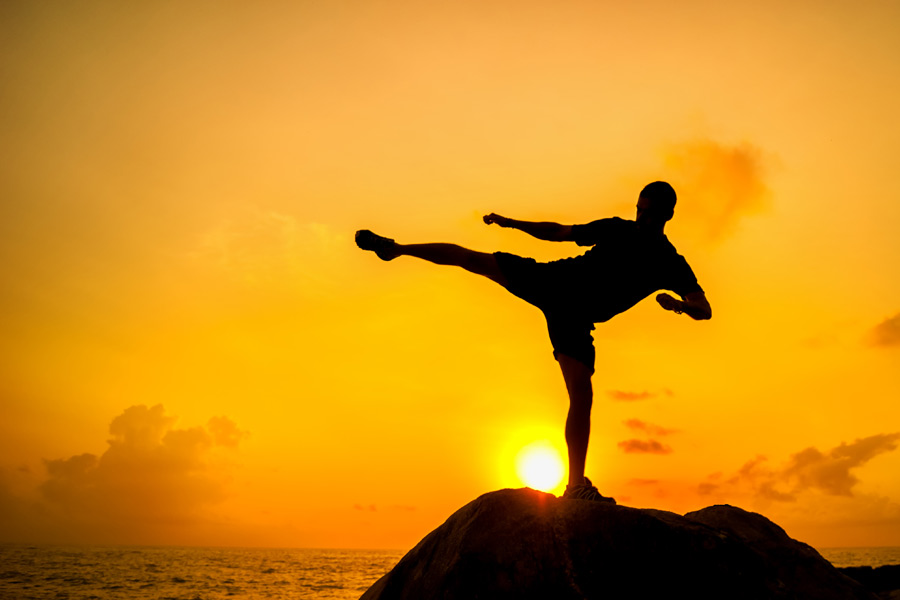[fshow photosetid=72157670210802474]
Martial arts, historically seen as combative and defensive disciplines, are in actual fact steeped in history, culture and the spiritual make up of many countries in Asia.
Due to the western military presence in the early 20th century and the popularity of Hollywood movies featuring Bruce Lee and Jackie Chan in the 60’s and 70’s, martial arts have found a place and generated interest throughout the western world. The arts have influenced recent popular culture with blockbusters movies like Enter the Dragon, Crouching Tiger Hidden Dragon and cartoons and kid’s movies like Kung Fu Panda and Karate Kid.
Of late, martial arts and their techniques have become integral to many gym classes, sparked a string of reality TV shows, and now figure in major sporting events like the Olympic Games and the Asian Martial Arts Games. Whether as a spectator or a participant, for those interested in martial arts, it is easy and rewarding to get involved whilst in Southeast Asia.
Muay Thai in Thailand
In Thailand, the traditional martial art is Muay Thai, referred to as ‘The Art of Eight Limbs’. The whole body is seen as a weapon with different limbs representing different armaments. The hands become swords and daggers and the shins and forearms the protective armour. A fight consists of five three-minute rounds with two-minute breaks between each. The competitors are scored by the judges on three elements: effective aggressiveness, ring generalship and pure aggressiveness.
From the Sukhothai era to present day, young Thai men and women have practised Muay Thai as a form of exercise, discipline and mindfulness. Although, Muay Thai is a modern and internationally practiced martial art, the traditional rituals remain an important and integral part of any fight. The fighters wear a headband called a mongkhon and armbands, pra jiad, to represent good luck, a superstition originating from when Thailand was at war. The warriors would tear off a piece of their mother’s sarong to wear in battle as a token of fortuity. Before every fight, a personalised wai khru ritual is performed by each fighter in turn in the ring. This takes the form of a respectful and delicately choreographed dance with bowing and slow fighting movements to music.
Nowadays, Muay Thai training camps can be found all over Thailand where both Thai and foreign enthusiasts hone their skills. As Muay Thai is such an important part of Thai culture, it’s a great idea and good entertainment to take in a Muay Thai competition at either of the big Bangkok stadiums Rajadamnern and Lumpinee or smaller venues in Koh Samui, Phuket and Chiang Mai.
Judo in Japan
Japanese martial arts are incredibly diverse using a variety of tools, methods and philosophy, depending on the school and styles where the participants have trained. Judo, considered a modern martial art in Japan, was created as a physical, mental and moral discipline by Kano Jigoro in 1882. In Japanese, it means “the gentle way”, highlighting the training of body and spirit over simply striving to win.
In a competition, the objective is to pin or take your opponent down to the floor using the three basic techniques of throwing, grappling and striking. The aim is to score an ippon, which is one full point, attained by a variety of methods, for example, maintaining a pin for 25 seconds or either of the opponents giving up.
Judo has gained popularity worldwide and been included as a sport in the Olympic Games since 1964. Jigoro’s Judo school, Kodokan, in Tokyo is the most well-known and reputable training institute in Japan. It is open to foreign trainees if you are interested in trying out a training session. Alternatively, you can watch the Judo training sessions at the school any evening of the week. Finally if you find yourself in Tokyo in April, the school hosts the All Japan Judo Championship.
Mepantigan in Bali
When you think of Bali, you don’t automatically think of martial arts but the traditional martial art of Mepantigan was founded on this tropical island. It’s relatively new and was devised from a mix of martial arts by the founder, Putu Witsen Widjaya. He describes the art as “a traditional sport that emphasizes emotion and spiritual intelligence”. Similar to other disciplines, the participants use throwing and locking techniques to take the opponent down to the ground.
A game is played in two rounds of three minutes each with judges awarding points for locking, throwing, aggressiveness and politeness. However, what makes Mepantigan very different from many other martial arts is the location of the sport and the accompaniment of traditional Balinese music and dance in the competitions. The competitors compete in a muddy field, on a beach or a paddy field wearing traditional dress and are required to perform a demonstration of Mepantigan in the form of a dance routine before the competition begins.
Although Mepantigan may appear to the casual onlooker to be a mud fight, it’s actually a respectful gesture to Dewi Sri, the rice goddess, whilst promoting and preserving local, ancient traditions. Tours are available to participate and or spectate, or if you are on Bali for a full moon, you can catch the mud games at The Green School near Ubud, performed by the founder and his trainees.
Useful Links
- For up to date information on Muay Thai fights and tickets in Bangkok check out http://rajadamnern.com/tickets/
- For more information regarding what is going on at the Kokodan Institute in Tokyo see http://kodokanjudoinstitute.org/en/
- If you are interested in a tour to learn more about Mepantigan take a look at http://www.lonelyplanet.com/indonesia/bali/ubud/activities/history-culture/mepantigan-balinese-wrestling-game

